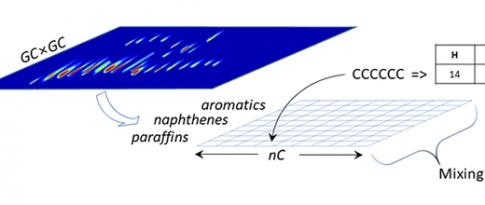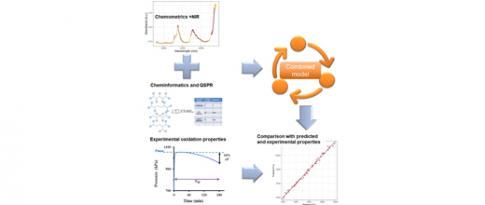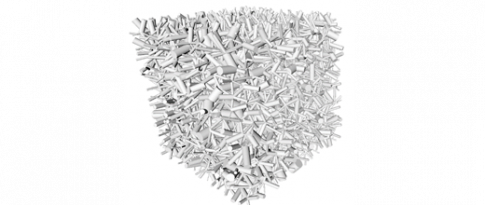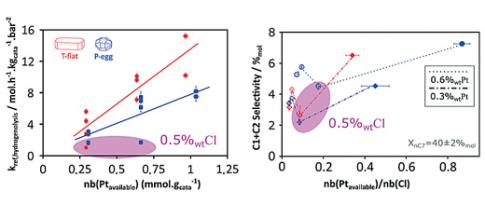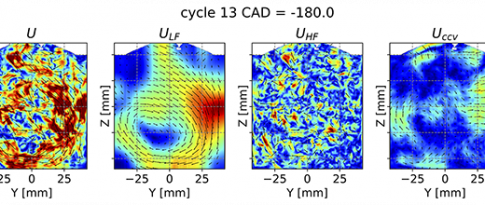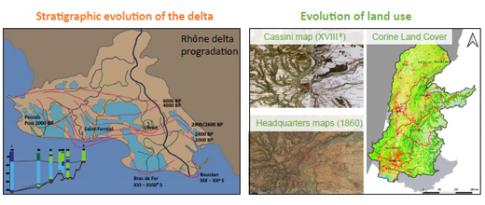19.10.2022
15 minutes of reading
The use of fundamental research to fuel the technological developments necessary for the energy transition is a core part of IFPEN's roadmap. One of the main challenges that has to be overcome to achieve carbon neutrality by 2050 is the need to obtain even more detailed parametric descriptions of energy production and conversion processes and systems. This requires the gradual replacement of global approaches characterizing the inputs and outputs of these systems with methods based on knowledge of the descriptors governing the detail of the physicochemical mechanisms at play, with the ultimate aim of establishing predictive constitutive laws. In this context, six articles are featured in this issue of science@ifpen.
The first two concern cheminformatics. Firstly applied to managing the compatibility between a polymer and a fluid, an essential aspect when designing a biofuel distribution system. A strong coupling between molecular descriptors and fluid descriptors is introduced in order to construct a set of parameters that can be directly interpreted by machine learning algorithms. These algorithms are also used to identify the chemical properties that control aging by oxidation of new fuels.
The next two articles focus on catalyst optimization. The tortuous paths taken by gases are characterized using digital twins. Catalyst optimization also benefits from the now systematic integration of catalytic descriptors in chemical kinetics models.
In addition, our understanding of the interactions between all the non-linear phenomena associated with turbulence and hydrogen combustion in an IC engine is progressing via the introduction of descriptors based on new modal decompositions of aerodynamic signals from simulations.
Finally, IFPEN is optimizing the prediction of expected coastline changes through the introduction of specific descriptors, combining existing satellite data with information gathered from the field.
I hope you enjoy reading this issue.

Luc Vervisch
Chairman of IFPEN's Scientific Board
Professor at lNSA Rouen Normandie
Member of the Institut Universitaire de France
Cheminformatics and its descriptors: application to polymer/fluid compatibility
Ensuring compatibility between polymers and fluids is essential in numerous industrial sectors: in the automotive sector, for example, the resistance of materials used in the fuel supply system is a vital consideration.
Prediction of fluid oxidation stability via machine learning
IFPEN uses numerous fluids in its fields of innovation for a variety of applications, ranging from renewable energy production to sustainable mobility. Many of the fluids are complex mixtures and the chemistry of their components (hydrocarbons, alcohols, esters, etc.) varies depending on the target application: combustion, cooling, lubrication, electrical insulation, etc.
Diffusion in catalysts: an often tortuous path!
In catalytic processes, an active phase is necessary to accelerate the transformation of the molecules in the fluid treated. Most of the time, this catalytic agent is placed on a porous support with a large internal surface area, making it possible to host a large number of active sites within a small volume...
Identification of reforming active phase catalytic descriptors
The vast majority of oil refineries are equipped with a catalytic reforming unit that fulfils three main functions: production of high-octane oil cuts for gasoline production (known as reformates), production of aromatic-rich cuts containing fewer than 10 carbon atoms, used in the chemicals industry, and generation of dihydrogen, primarily used in hydrotreatment and hydrocracking units...
A better description of turbulent flows for hydrogen powertrains
Within the framework of a global policy to reduce the emissions produced by the transport sector - particularly road transport - IFPEN is focusing on a complementary option along with vehicle electrification: the use of hydrogen powertrains. However, the use of hydrogen in IC engines first requires a comprehensive understanding of different phenomena, associated, for example, with interactions between the fuel and air...
Impact of hydroclimatic and anthropological parameters on the dynamics of the Rhône delta
Coastal sedimentary basins evolve under the effect of interactions between, on the one hand, hydroclimatic processes taking place in catchment areas, and on the other hand coastal marine processes that remodel the coastline. The evolution of these environments is naturally controlled by the climate, over different time periods (ranging from tens of years to thousands of years), through variations in sedimentary flows and erosion...






